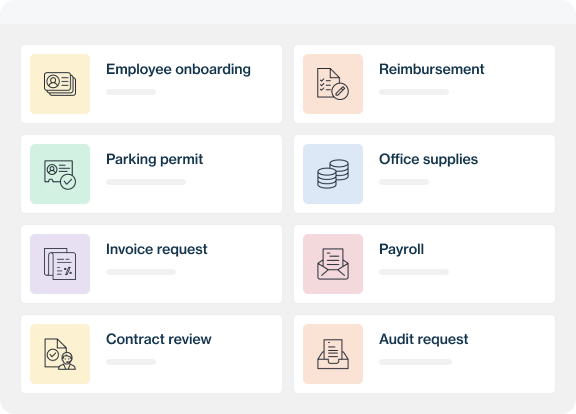What is Enterprise Service Management (ESM) and why is it so important for your organization?
With this blog post, we want to explain what Enterprise Service Management (ESM) is, how it can help you improve your service delivery and customer satisfaction, and what challenges you may face when implementing it. ESM is a way of using the principles and practices of IT service management(ITSM) to manage other types of services within an organization, such as HR, facilities management, legal, marketing, finance, etc. The idea is to create a unified and standardized platform for delivering and managing all the services the organization offers, both internally and externally.
Many advantages of the ESM:
First, you can increase efficiency and productivity by automating and simplifying processes, reducing duplication and errors, and freeing up time for more value-adding activities.
Second, you can increase the quality and reliability of your services by following best practices, measuring and monitoring performance, and constantly improving your processes.
Thirdly, you can improve customer experience and loyalty by offering faster, smoother and more personalized service, as well as empowering customers to choose and order services through a self-service portal.
Last but not least, it increases the possibility to collaborate and work across "borders" with e.g. cases/processes that cross several organizational departments.
Conditions for success with ESM
To succeed with ESM, you need a clear purpose, a shared vision, strong leadership and a committed team. You must also have a good understanding of your customers' needs, wants and expectations, and how to best meet them. You must also be prepared to adapt to changes in the organization, but also in the market and new technologies. As always, being open to innovation and learning is a success factor.
ESM is not just an IT project, but a cultural and organizational change that requires a holistic approach and a long-term commitment. But if you get it right, ESM can be a great opportunity to create value for your organization, your customers and your employees. We hope this blog post will give you a better idea of what ESM is and how it can benefit you.
ESM in practice
To give you a better idea of what ESM means in practice, we would like to share an example from one of our customers. It is a large company that has several different business units and functions delivering different types of services to both internal and external customers. The company was struggling to manage all these services in an efficient and unified way. There was no common platform or process for receiving, processing, delivering and following up on orders and other requests. This led to slow service, poor communication, dissatisfied customers and high costs.
The company decided to implement ESM as a solution to these problems. They chose to use an ITSM software that we at Synerity offer as the basis for their ESM platform. They customized the software to their specific needs and integrated it with their existing systems. They also defined clear roles, responsibilities, processes and metrics for all their services. They also trained their employees on how to use the new platform and how to work in their processes.
The results were very positive. The company increased its efficiency by 30%, its reliability by 30% and its customer satisfaction by 50%. They were also able to reduce their costs by 20% by eliminating waste and unnecessary steps. They could also create a more collaborative and innovative culture where all service providers and customers work towards a common goal. With a single portal for all services and needs regardless of which entity's services you want to call upon.
This is just one example of how ESM can change your organization for the better. If you want to know more about ESM or how we at Synerity can help you implement it, contact us!
Platforms we recommend for a good ESM experience are HaloITSM and FreshService.
Learn more about Enterprise Service Management and our various solutions here!



